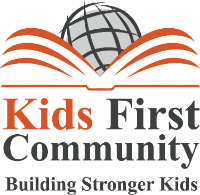Child sexual abuse is any touching or non-touching sexual activity between a child and an adult. It’s the least reported type of abuse; victims suffer from fear, guilt, denial, withdrawal, post traumatic stress, “sleeper effect” and other mechanisms of coping with molestation, so diagnosing and proving child sexual abuse is often complex and difficult.
What is child sexual abuse?
The lack of a precise definition is also one of the reasons many cases of sexual abuse remain unreported. It includes a range of touching (penetration, fondling) or non-touching (exposing or forcing a child to watch inappropriate sexual content or intercourse, masturbation or exhibition in front of the child, taking inappropriate pictures of kids etc.) sexual actions.
Main factors that differentiate abusive from non abusive sexual acts are:
-Difference in power: child cannot perceive and undertake sexual acts the way an adult/the abuser can
-Difference in knowledge: abuser is more intelligent and understands better the nature and implications of sexual acts.
-Difference in gratification: it’s impossible for a child to gain gratification from a sexual act the way abuser can
Child sexual abuse statistics
- Around 84,000 kids are sexually abused each year in United States. These are only reported and proven cases.
- Most sexual abusers know the child they abuse and are not random strangers.
- One third or abusers are family members
- Studies from Crimes Against Children Research Center state the real number of sexual abuse victims is 1 in 5 girls and 1 in 20 boys
- Kids age 7 to 13 are most vulnerable for sexual molestation
- 20% of adult females have memories of some type of sexual abuse during their childhood
Risk factors – who are sexual abusers?
Once again, it’s very difficult to recognize and define a sexual abuser’s profile. They are of all ages, social statuses, races and economic backgrounds. Child sexual abuse happens in big towns, small villages, modern, traditional or primitive societies. Girls are more likely to be molested from family members than boys. According to statistics, girls who live with stepfathers are more at risk from sexual abuse.
Some of the common characteristics sexual molesters may have are:
- history of sexual, or some other form of abuse in childhood
- substance abuse
- lack of self control
- pretending to be able to gain sexual satisfaction from relationships with adults
- perceiving kids as if they can think, feel, reason, or understand reality the same as adults
- mental illness
Warning signs – things that suggest a child is sexually molested
Symptoms of child sexual abuse vary depending on child’s age, personality characteristics, severity of abuse, etc. Younger children may develop bedwetting, sleeping problems, vomiting, bowel problems, or may refuse food. Older kids can become fearful, depressed, withdraw from friends, display shame, guilt or too much knowledge about sexual activities, have nightmares, outbursts of anger, while teenagers may become promiscuous, run away from home, use drugs and alcohol, or contemplate suicide.
It’s important to listen and pay attention to what a child says and how (s)he acts. Most cases of sexual abuse are discovered after a child has talked about it, usually without even realizing (s)he is revealing what is going on.
Traumatization and effects of sexual abuse in childhood
Victims of child sexual abuse usually continue to suffer from its consequences far beyond childhood. Many victims gain realization or recover memories of being abused only after they enter adult age. Consequences of sexual abuse in childhood are deeply traumatizing and severe.
Child sexual abuse survivors suffer from:
- post-traumatic stress disorder (fear, helplessness, horror, agitation, irritability, flashbacks of traumatic event, troubles sleeping)
- psychiatric disorders (estimated 56% of women and 47% of men who were sexually molested as kids will develop over a lifetime some form of psychiatric disorder: depression, borderline personality, suicidal ideation, bulimia, PTSD etc.)
- substance abuse
- obesity
- age inappropriate sexualized behavior
- adult revictimization (four times higher risk becoming victims of sexual abuse in adult age, pursuing dysfunctional and sexually violent relationships)
Traumatization affects adult survivors of child sexual abuse in many ways: it reflects on their friendships, love relationships, professional success, parenting skills and ability for general, long-term wellbeing.
Prevention of child sexual abuse – what can you do?
-Knowledge is power. Teach your kids what is inappropriate sexual behavior. Stay informed and active on this subject, engage in parent groups or school boards to help raise awareness about sexual abuse of children.
-If you suspect a child is being sexually molested, report it immediately to local police or child protection service. You must not remain silent! Even if you aren’t sure if your suspicion is justified, seek help from trained professionals who will take over and determine if the child is being molested. List of toll-free numbers for professional agencies trained to receive and investigate suspected child abuse cases.
It’s important to show support to abused children and to understand families affected with this type of abuse can be helped. Early discovery, proper help, support from friends, family and local community are crucial factors in destigmatization and recovery from child sexual abuse.







